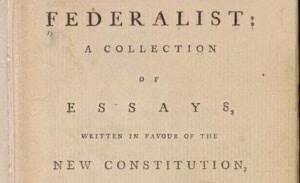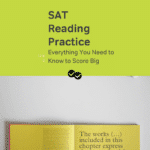The SAT doesn’t have a history section, but don’t toss out your US History textbook just yet! With the new SAT’s push towards real-world reading skills, historical documents like Dr. Martin Luther King, Jr.’s speeches, Frederick Douglass’ writings, and the Gettysburg Address will appear in the SAT Reading section.
“Great Global Conversation”
As you might remember from history class, the founders of the United States wrote a lot of documents that are basically the foundation of the US. From the Declaration of Independence and the Bill of Rights, down to the 85 Federalist Papers that get lost in the shuffle, these US Founding Documents might just show up on exam day.
These documents are all part of what the SAT is framing as the “great global conversation.” When the founders wrote these documents, they were literally having a conversation with one another, and other nations around the world, about how the newly formed United States would function!
Be Prepared
Though you don’t need to take a US history class just to prep for the SAT, it’s smart to read a few of these documents to get an idea of what you might be looking at on test day. The language might seem tough at first, but think about conversation in the passage. How does Alexander Hamilton’s Federalist 70, for example, fit into global conversation?

In this particular passage, the author begins with an opinion he disagrees with:
- “a vigorous Executive is inconsistent with the genius of republican government”
translation: “a strong President doesn’t fit into a true people-led government”
After establishing the opposition, the author forms his own argument:
- “Energy in the Executive is a leading character in the definition of good government”
translation: “a single active President makes for a a good government”
When reading US founding documents, try to figure out what idea the author is responding to. Once you’ve got the global conversation down, passage detail questions will make a lot more sense!
Hint: Notice key words like “unity” and “responsibility” that appear throughout the essay. Keep an eye out for test questions focused on common themes.
Don’t Skip the Italics!
While you history buffs might benefit from previous study of these passages, the rest of us don’t need to worry! Remember that this is not a history test. Even though historical documents appear on the reading section, the SAT is not testing you on historical knowledge. Because all questions and answers are taken directly from the passage given to you on the exam, all the information you need can be found in the passage, and in the italicized introduction to the passage. These intros include information that can help you put the passage in context, figure out the audience and purpose, and even extra details that often show up in the questions.






Leave a Reply